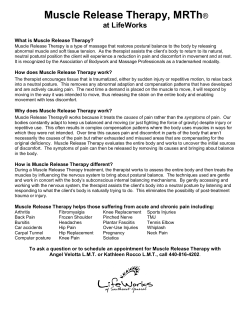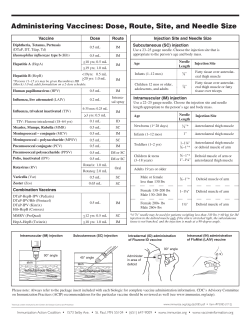
W J Paulus and D L Brutsaert 1980;46:303-304 doi: 10.1161/01.RES.46.2.303
Comments on "How to quantify pump function of the heart". W J Paulus and D L Brutsaert Circ Res. 1980;46:303-304 doi: 10.1161/01.RES.46.2.303 Circulation Research is published by the American Heart Association, 7272 Greenville Avenue, Dallas, TX 75231 Copyright © 1980 American Heart Association, Inc. All rights reserved. Print ISSN: 0009-7330. Online ISSN: 1524-4571 The online version of this article, along with updated information and services, is located on the World Wide Web at: http://circres.ahajournals.org/content/46/2/303.citation Permissions: Requests for permissions to reproduce figures, tables, or portions of articles originally published in Circulation Research can be obtained via RightsLink, a service of the Copyright Clearance Center, not the Editorial Office. Once the online version of the published article for which permission is being requested is located, click Request Permissions in the middle column of the Web page under Services. Further information about this process is available in the Permissions and Rights Question and Answer document. Reprints: Information about reprints can be found online at: http://www.lww.com/reprints Subscriptions: Information about subscribing to Circulation Research is online at: http://circres.ahajournals.org//subscriptions/ Downloaded from http://circres.ahajournals.org/ by guest on September 22, 2014 LETTERS TO THE EDITOR Comments on "How to Quantify Pump Function of the Heart" In a recent paper by Elzinga and Westerhof (1979) the contribution of isolated cardiac muscle mechanics to the evaluation of ventricular performance was considered unrewarding and questionable. They proposed, instead, that ventricular performance be analyzed in terms of mean ventricular pressure and mean ventricular flow. Such an approach clearly distinguished changes in inotropism from changes in end-diastolic volume and showed a remarkable resemblance to roller pump mechanics. They finally proposed to solve the apparent differences between isolated muscle mechanics and ventricular performance by loading papillary muscles as if they were part of the ventricular wall. Many of the controversies in studies of isolated muscle mechanics and ventricular performance can indeed be ascribed to the nature of the loading, which is ejection for the ventricle and either isotonic or isometric contraction for the muscle strip. This view is not entirely new, however, since it was already suggested in this journal a few years ago by Abbott and Gordon (1975) when they proposed to impose inertial forces on papillary muscle strips. Moreover, the idea of a loading feedback principle has been expanded more recently to include vascular impedance (Paulus et al., 1976, 1979). When imposing these impedance loads on isolated muscle strips, the hypothetical sets of pressure and flow waves are similar to the pressure and flow waves that a ventricle creates when facing the same impedance. From these observations it is obvious that studies of papillary muscle reveal valid information on ventricular performance when it is loaded as a ventricular muscle and not as a striated muscle. Walter J. Paulus Dirk L. Brutsaert Department of Physiology University of Antwerp Antwerp, Belgium References Abbott BC, Gordon DC (1975) A commentary on muscle mechanics. Circ Res 36: 1-7 Elzinga G, Westerhof N (1979) How to quantify pump function of the heart. Circ Res 44: 303-308 Paulus WJ, Claes VA, Brutsaert DL (1976) Physiological loading of isolated mammalian cardiac muscle. Circ Res 39: 42-53 Paulus WJ, Claes VA, Brutsaert DL (1979) Physiological loading of isolated feline cardiac muscle. Circ Res 44: 491-497 Reply to the Preceding Letter In the paper by Abbott and Gordon (1975) the pressure gradient between ventricle and aorta was emphasized as the driving force to overcome the inertia of the system. However, we think that the 303 0 375um temp 3 S 7 ° C 2-B 3.2 LENGTH(mm) FIGURE 1 A thin (375 fim diameter) trabecular muscle, loaded "physiologically," was stimulated at 120 beats/ minute. A different isotonic load was introduced every 15 contractions (beating) to avoid the gradually developing influence of the load on muscle behaviour (Parmley et al., 1969). Left: a number of superimposed contractions as a function of time. Right: The same contractions displayed in an x-y diagram. Two identical "physiologically" loaded contractions are shown in the figure, one before and one at the end of the experiment, to show the stability of the preparation. three factors they claim to be responsible for this difference in pressure do not constitute an important part of the total arterial load. The approach followed by Paulus et al. (1979), who loaded papillary muscles with an R-C-R network (Westerhof, 1968), provides a more direct solution when one wants to study isolated muscle in a way analogous to the whole heart. In such studies not only the loading of the muscles is important but also the type of experiments performed. An example of one of the experiments we had in mind when we stated in our part of the controversy (Elzinga and Westerhof, 1979) "... i.e. to study isolated heart muscle as if it were part of the ventricular wall," is given in Figure 1. In this figure are shown force and length obtained from a number of contractions of a thin trabecular muscle, isolated from an adult cat, recorded as a function of time (left) and displayed in an x-y diagram (right). The experiment was designed to resemble closely the normal cardiac contraction with respect to: the stimulation frequency (2 Hz), the temperature (± 37°C), the contraction pattern (isometric contraction followed by shortening and subsequently isometric relaxation followed by lengthening), and the load (one of the contractions is loaded "physiologically"). This is just one example of a number of experiments which would be needed to use the muscle experiments as a building block to understand cardiac pump function. Other questions are for instance: Is the same pump function graph obtained with all sorts of loads or only with loads within the limited range of configurations as tested in our cardiac studies (Elzinga and Westerhof, 1973,1979)? What property of muscle or heart is responsible for the clear cut difference in the alteration of the pump function graph resulting from a change in Downloaded from http://circres.ahajournals.org/ by guest on September 22, 2014 CIRCULATION RESEARCH 304 end-diastolic volume and from a change in inotropic state? Is the end-systolic force-length relationship independent of the length at which the contraction starts? These and similar questions need to be answered before we will be able to use isolated muscle experiments towards the understanding of cardiac pump function. Gijs Elzinga, M.D. Ph.D. Nicolaas Westerhof, Ph.D. Physiological Laboratory Free University Van der Boechorststraat 7 Amsterdam, The Netherlands VOL. 46, No. 2, FEBRUARY 1980 References Abbott BC, Gordon DG (1975) A commentary on muscle mechanics. Circ Res 36: 1-7 Elzinga G, Westerhof N (1973) Pressures and flow generated by the left ventricle against different impedances. Circ Res 32: 178-186 Elzinga G, Westerhof N (1979) How to quantify pump function of the heart. The value of variables derived from measurements on isolated muscle. Circ Res 44: 303-308 Parmley WW, Brutsaert DL, Sonnenblick EH (1969) Effects of altered loading on contractile events in isolated cat papillary muscle. Circ Res 24: 521-532 Paulus WJ, Claes VA, Brutsaert DL (1979) Physiological loading of isolated feline cardiac muscle. The interaction between muscle contraction and vascular impedance in the production of pressure and flow waves. Circ Res 44: 491—497 Westerhof N (1968) Analog studies of human systemic arterial hemodynamics. Ph.D. thesis, Philadelphia, University of Pennsylvania Downloaded from http://circres.ahajournals.org/ by guest on September 22, 2014
© Copyright 2025


















